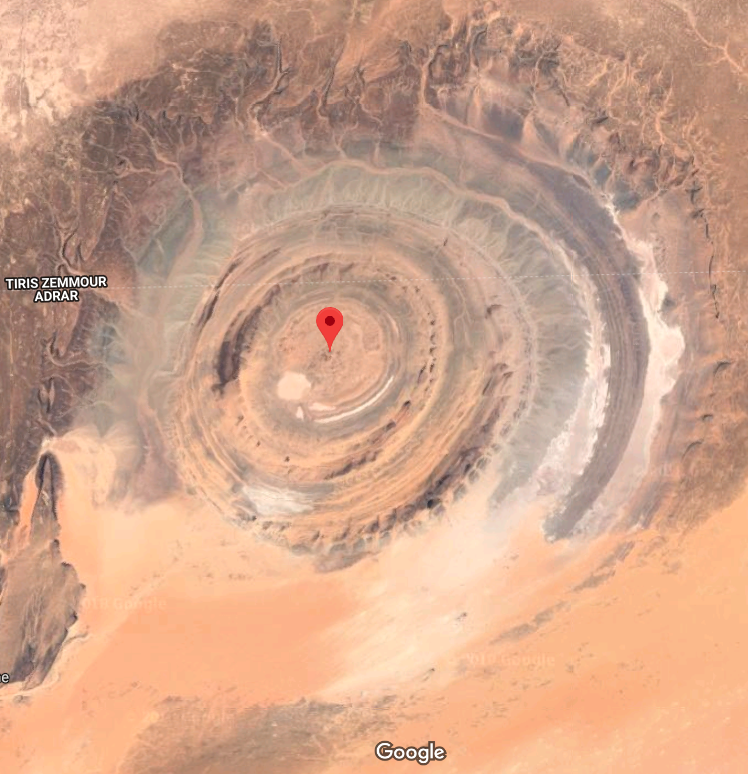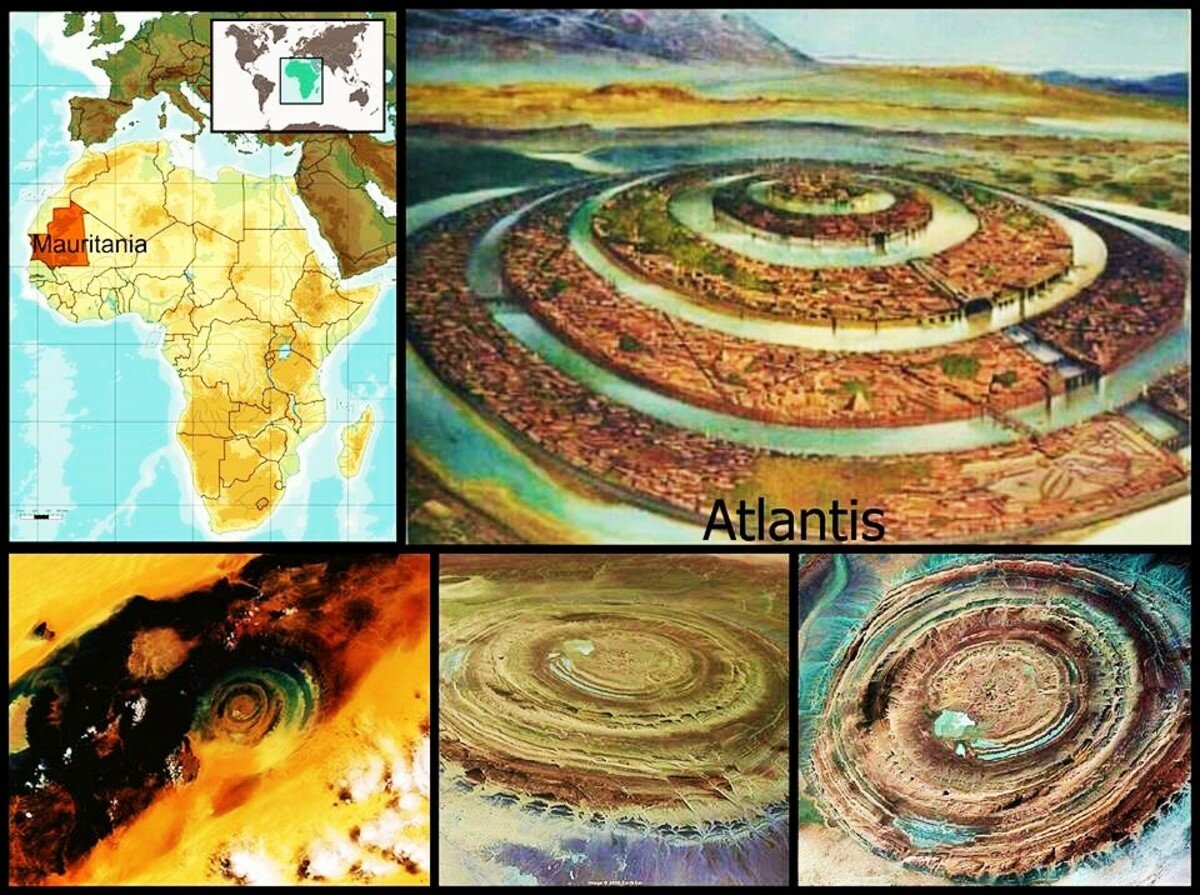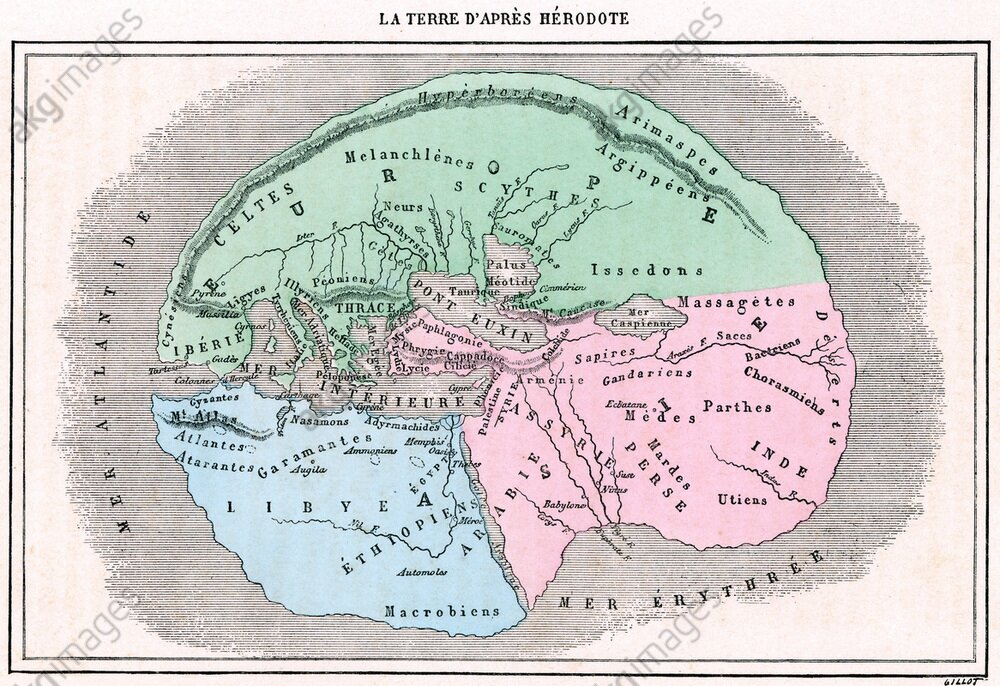Lost City of Atlantis Seems to have Been Found In Plain Sight: the Opposite of What we Thought
Since the time of ancient Rome, two thousand years ago, people have been writing about the mythical city of Atlantis, purported to have been “lost at sea.” Thinkers with work that has been treasured and revered throughout history like Plato and Solon wrote about Atlantis.
The immense credibility of writers that published their works two millennia ago suggests that Atlantis was something more than an allegory, as most people are well aware.
Now, headlines are being made about the possibility of Atlantis being found in West Africa. An article suggests that this hole in the Earth, found on Google Maps, could be the site of Atlantis. This is known as the Eye of the Sahara.

(Image credit: Ebaumsworld)
The Richat Structure is the formal name given to this structure, found in Ouadane, Mauritania. It is believed to be a rock formation, dating back to the late Proterozoic period. It measures 25 miles in diameter, or 40 kilometers, composed of an intricate series of wells and rings that divide high relief circular ridges from waterways and low canals.
Sounds like quite a useful formation, and it certainly makes you wonder whether or not it is natural.
This compilation of photos was presented as some evidence to suggest that this is in fact the “Atlantis” people were depicting.

(Image credit: Ebaumsworld)
Now here’s where some real, verifiable scientific evidence comes into play. People thought the Sahara desert was always dry? The truth is, the massive Saraha desert of Northern Africa that extends all the way down into Western Africa in Mauritania, it used to be something of an oasis. That was a mere 5,000 years ago.
As a Live Science article points out, “From lakes and grasslands with hippos and giraffes to a vast desert, North Africa’s sudden geographical transformation 5,000 years ago was one of the planet’s most dramatic climate shifts.”
5,000 years ago is only 3,000 BC. That’s deep into recorded history, even after the foundation of Sumeria and all of those Mesopotamian societies. So during the same period of time in which the cradle of civilization was emerging from Mesopotamia (well 1,000 years into that process, a very long time still), the Sahara Desert wasn’t entirely a desert?
So to what extent was the Sahara not desert? According to even the mainstream narrative, a transformation to desert took place almost simultaneously across the entire northern half of Africa, as a study published in 2013 found. The results of the study appeared in an issue of the journal Earth and Planetary Science Letters.
The researchers took a close look at dust that was blown west from Africa, proceeding to drop into the Atlantic Ocean. Through what was described as 30,000 years of dust and muck retrieved from the bottom of the sea with ocean drilling ships, they sifted, and found something serious.
They found that the changing levels of dust blown into the ocean and turned into sediment indicate dust only traveled like that for the past 5,000 years. A lot of dust means it was dry back then, and less dust means it was wetter, to state the obvious.
Almost the entire, massive area of Northern Africa was not desert? That certainly sounds like it could be the home of Atlantis.
This is a recreated map of the known world, originally produced by Herodote in 450 BC, a Greek Historian. It appears to show Atlantis right there in West Africa where the Richat Structure can be found.

(Image credit: Ebaumsworld)
Was Atlantis “lost at sea,” or was it the complete opposite and it just dried up?
An in-depth, 20 minute video was published a couple months ago exploring this theory.
